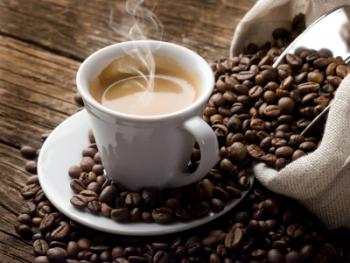We did some research and found the five unhealthiest seafood you should be aware of.
Farm-raised salmon
Knowing the origin of the salmon on your plate is very important. Farmed salmon has been known to have high levels of contamination. Polychlorinated biphenyls (PCBs) are used in transformers and other electrical equipment as lubricants and coolants, and farmed salmon absorb PCBs from their feed. They also often contain high levels of pesticides. Unfortunately for you and the salmon, they contain 3 ½ times the levels of PCBs than other seafood. Not to mention because farmed salmon are raised in cramped cages, they are fatter than wild salmon. That means more PCBs and pesticides are stored in their fat for longer periods of time. That's a tough first entry on our list of the five unhealthiest seafood.Clam chowder
This thick, creamy, stick-to-your-bones chowder sticks to you bones for a reason. It’s chock-full of clams, heavy cream, bacon, and butter. Somerecipes also include milk and whipping cream, which only ups the fat content. On average, an eight-ounce serving of clam chowder contains 299 calories, 100 of which are from fat; that means roughly 43% of the calories are fat calories. Out of those fat calories, 35% are the artery-clogging saturated kind. That same serving also contains 910 mg of sodium and 13% of your daily dose of cholesterol (based on a 2,000 calorie diet). This entry might better for a five unhealthiest seafood recipes, but, nonetheless, it's here and for good reason.
Raw oysters
Yes, oysters do have high levels of zinc, which is necessary for a healthyprostate, but with increasing levels of sea pollution, the bad outweighs the good. Oysters serve as one of the primary filters for their habitats. So, for those of you who love to shuck and slurp, you are ingesting high levels of toxins that the oyster absorbed. Raw oysters are also high in purines (organic compounds also found in other filter organs like kidney and liver) and can increase a man’s risk of developing gout. Cooked oysters are a safer alternative if you're looking to avoid the five unhealthiest seafood.
Find more examples of the unhealthiest seafood after the jump...
Shrimp
Shrimp is the most widely consumed seafood. Although it is a good source of protein and low in fat, imported shrimp can pose a health risk due to unsanitary farming in parts of the world where health and safety regulations are loose. Salmonella is found in many processed shrimp products that are advertised as “ready-to-eat.” Large amounts of antibiotics and chemicals are also sometimes used in farmed shrimp. For example, pesticides such as endosulfan that can cause neurological damage can make their way into shrimp farming operations. Moreover, the antibiotics used on farmed shrimp can lead to resistant strains of E. coli that can infect consumers or cause allergic reactions. Wild-caught shrimp can be a safer alternative to imported farmed shrimp.
Fugu
There’s unhealthy seafood and then there’s downright dangerous seafood. Fugu (blow fish or puffer fish) is often consumed at special feasts because it’s considered a delicacy in Japan, one that kills approximately 100 diners a year. What makes fugu so dangerous is that it contains deadly poison in its organs. If not properly cleaned and prepared, that poison can kill anyone who ingests it. For that reason, only licensed cooks are allowed to prepare fugu in Japan. However, prepared fugu can be found in grocery stores and online. And recently there have been advances in fugu farming and research that have lead to non-poisonous varieties.
it's hard out there for a shrimp
It has often been said that seafood is a great addition to your diet forweight loss or just for health. But certain seafood can be unhealthy due to its high saturated fat, high cholesterol and sodium levels, toxins, pesticides and chemicals or just natural poisons. Choose wisely when you shop for seafood, looking for wild-caught or sustainably harvested fish when possible.































